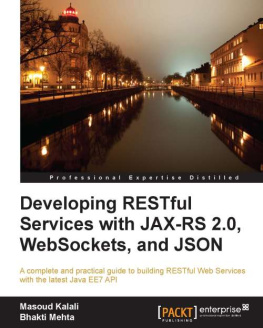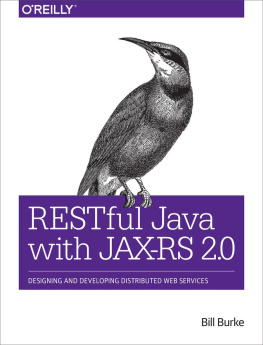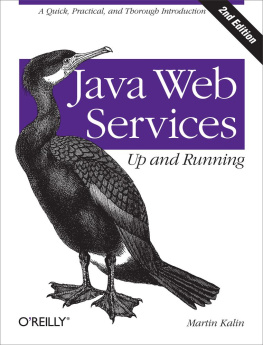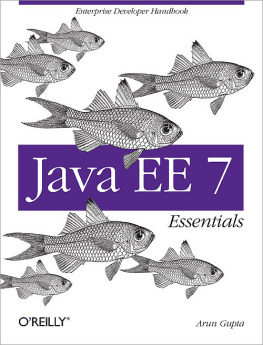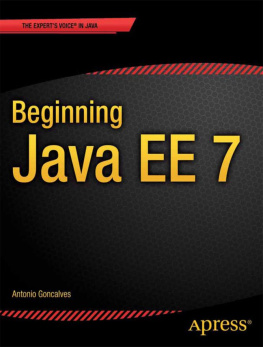Burke - RESTful Java with JAX-RS: [designing and developing distributed web services]
Here you can read online Burke - RESTful Java with JAX-RS: [designing and developing distributed web services] full text of the book (entire story) in english for free. Download pdf and epub, get meaning, cover and reviews about this ebook. City: Beijing, Köln, year: 2010, publisher: OReilly Media, genre: Computer. Description of the work, (preface) as well as reviews are available. Best literature library LitArk.com created for fans of good reading and offers a wide selection of genres:
Romance novel
Science fiction
Adventure
Detective
Science
History
Home and family
Prose
Art
Politics
Computer
Non-fiction
Religion
Business
Children
Humor
Choose a favorite category and find really read worthwhile books. Enjoy immersion in the world of imagination, feel the emotions of the characters or learn something new for yourself, make an fascinating discovery.

RESTful Java with JAX-RS: [designing and developing distributed web services]: summary, description and annotation
We offer to read an annotation, description, summary or preface (depends on what the author of the book "RESTful Java with JAX-RS: [designing and developing distributed web services]" wrote himself). If you haven't found the necessary information about the book — write in the comments, we will try to find it.
Learn how to design and develop distributed web services in Java using RESTful architectural principals and the JAX-RS specification in Java EE 6. With this hands-on reference, youll focus on implementation rather than theory, and discover why the RESTful method is far better than technologies like CORBA and SOAP. Youll get step-by-step instructions for installing, configuring, and running several working JAX-RS examples using the JBoss RESTEasy implementation of JAX-RS.
Burke: author's other books
Who wrote RESTful Java with JAX-RS: [designing and developing distributed web services]? Find out the surname, the name of the author of the book and a list of all author's works by series.


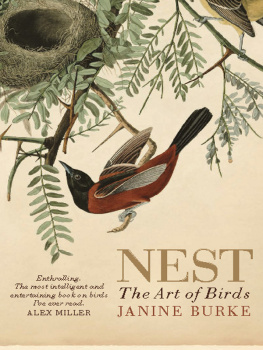




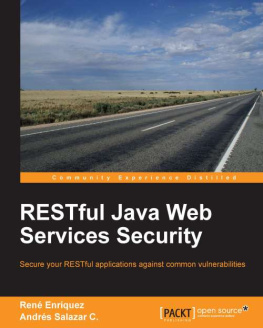
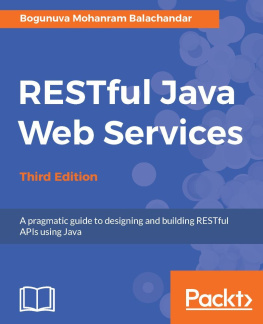
![Mario-Leander Reimer [Mario-Leander Reimer] - Building RESTful Web Services with Java EE 8](/uploads/posts/book/119360/thumbs/mario-leander-reimer-mario-leander-reimer.jpg)
